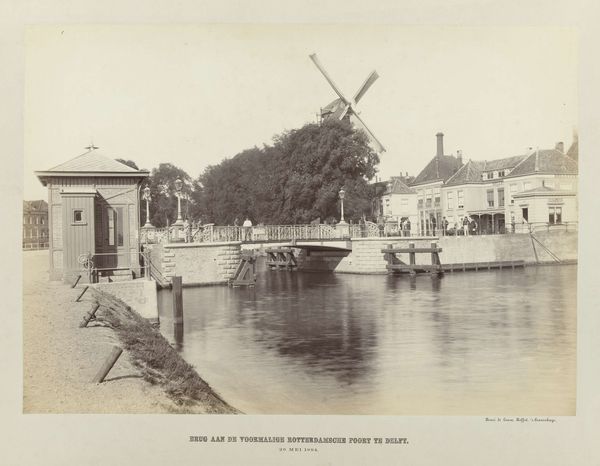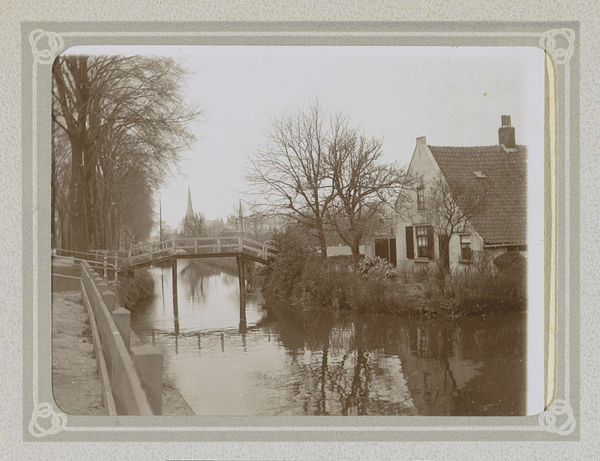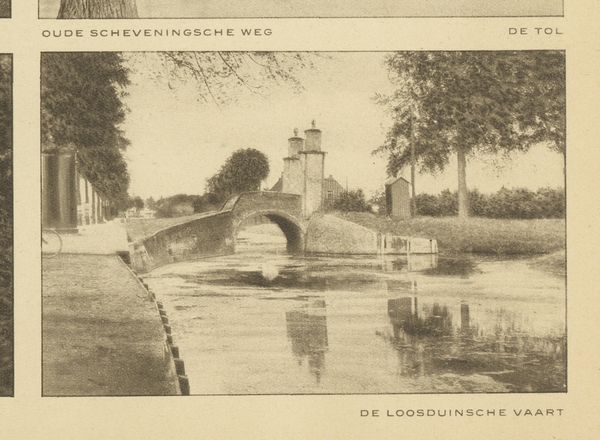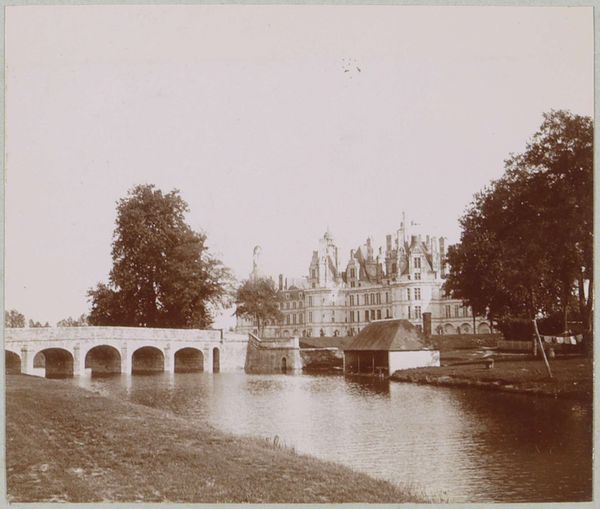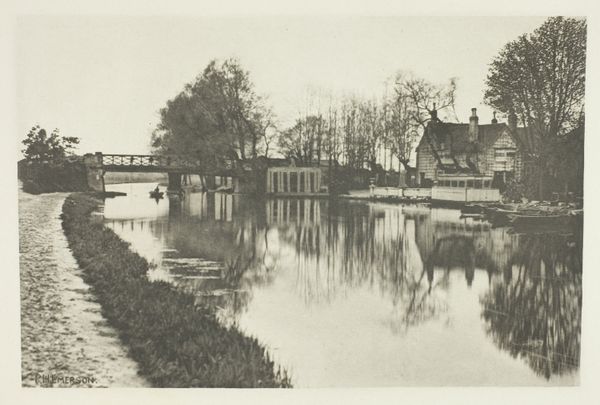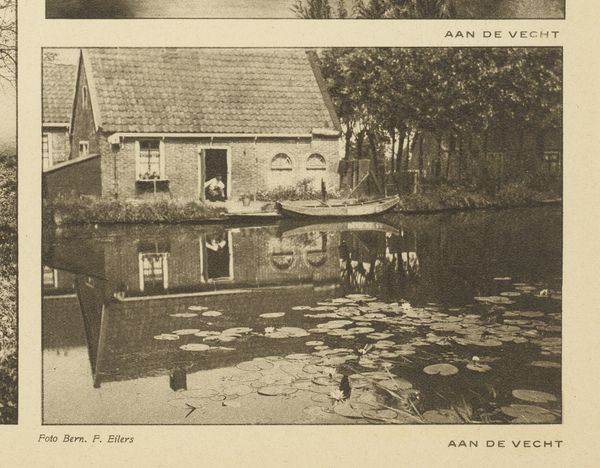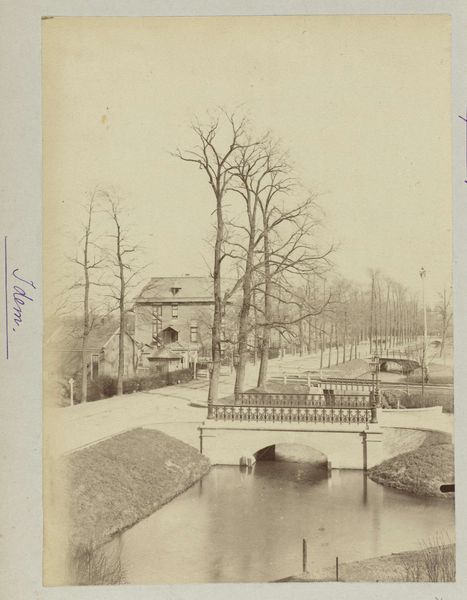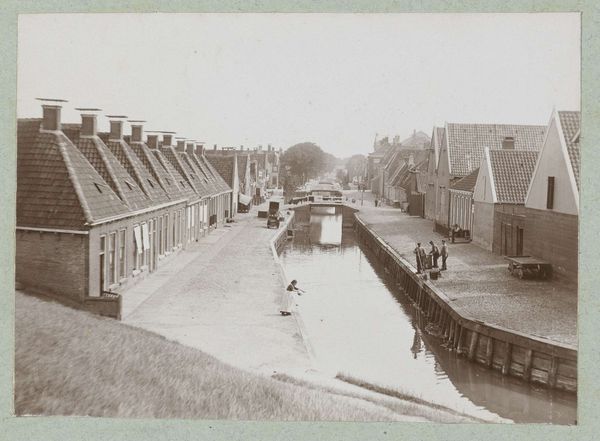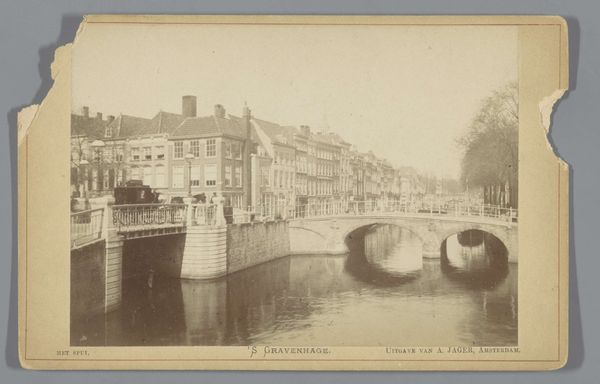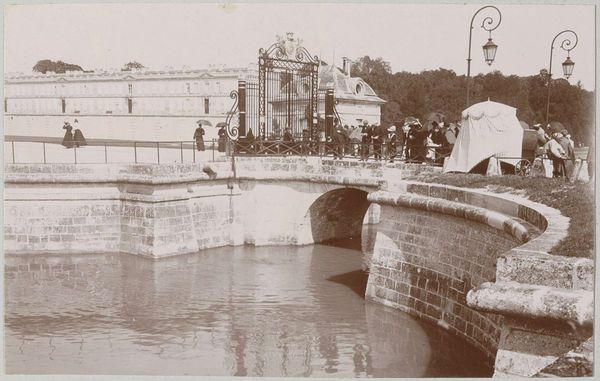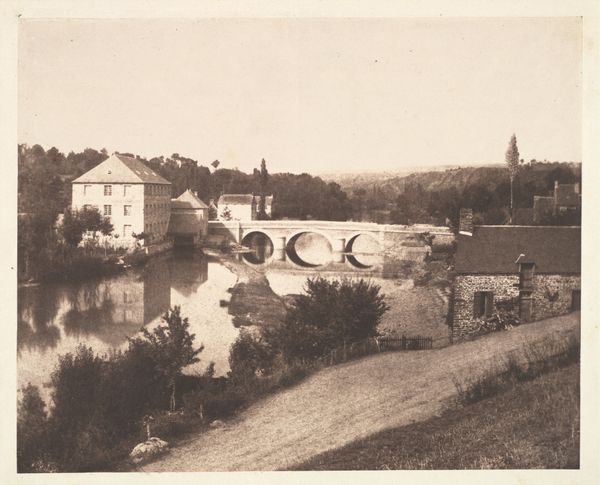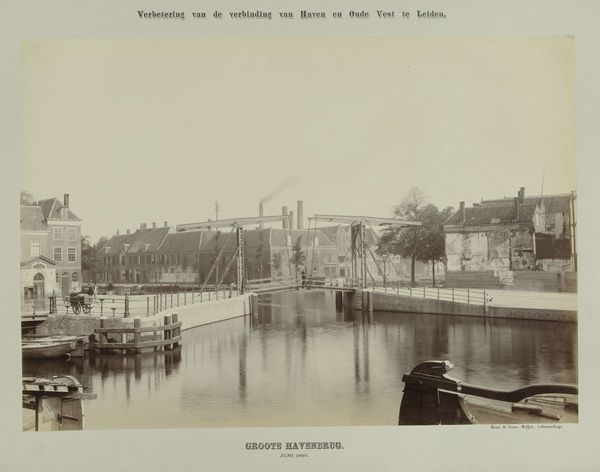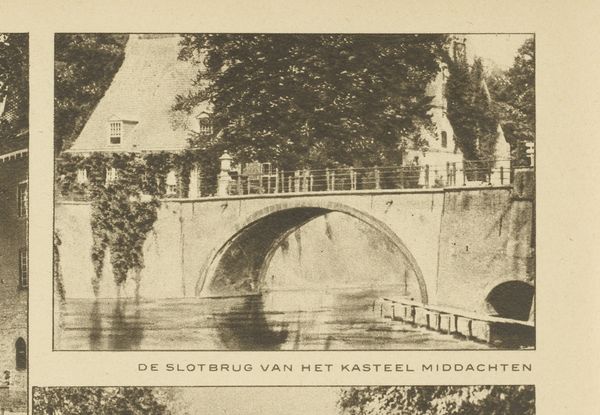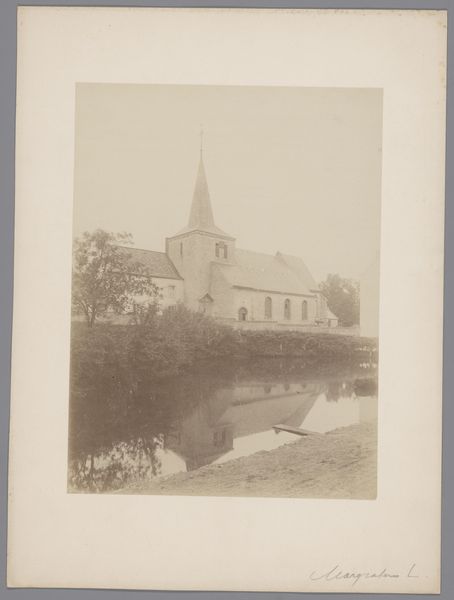
photography
#
landscape
#
photography
#
19th century
#
cityscape
Dimensions: height 223 mm, width 562 mm
Copyright: Rijks Museum: Open Domain
Editor: Here we have Henri de Louw’s “Keersluis en brug bij Rijnoever bij Leiden,” a photograph from between 1893 and 1896. There's such a stillness in the water, it feels like a moment frozen in time. How do you interpret this composition? Curator: What strikes me immediately is the linear perspective. The bridge, the lock, the buildings all recede into the distance, drawing the eye along a very deliberate path. The contrasts between light and shadow are also significant, particularly in the way they define the architectural forms and create a sense of depth. The formal organization invites close scrutiny. Do you see the repeated horizontal lines and their contribution to the overall stability? Editor: I do, the horizontal lines almost create a grid. And I see how the trees act as a backdrop. Is there any deeper symbolism that the rigid horizontal composition suggests, given that the image depicts elements of urbanization? Curator: It is less about inherent symbolism, and more about how the photographer creates formal harmony. De Louw seems focused on capturing a sense of order and clarity. Notice how the bridge, for example, is not just a bridge but a geometric form elegantly placed within the landscape. There’s a precision here, an almost scientific observation translated into art. What are your thoughts? Editor: That’s fascinating. I was so caught up in the initial mood that I hadn’t fully appreciated the geometric structures within the piece, and the significance of light in shaping forms. I see so much more in the contrasts and construction of the artwork now. Curator: Indeed. It’s about understanding how these elements contribute to the artwork's formal integrity, it becomes apparent that De Louw uses composition to present an enduring image.
Comments
No comments
Be the first to comment and join the conversation on the ultimate creative platform.
